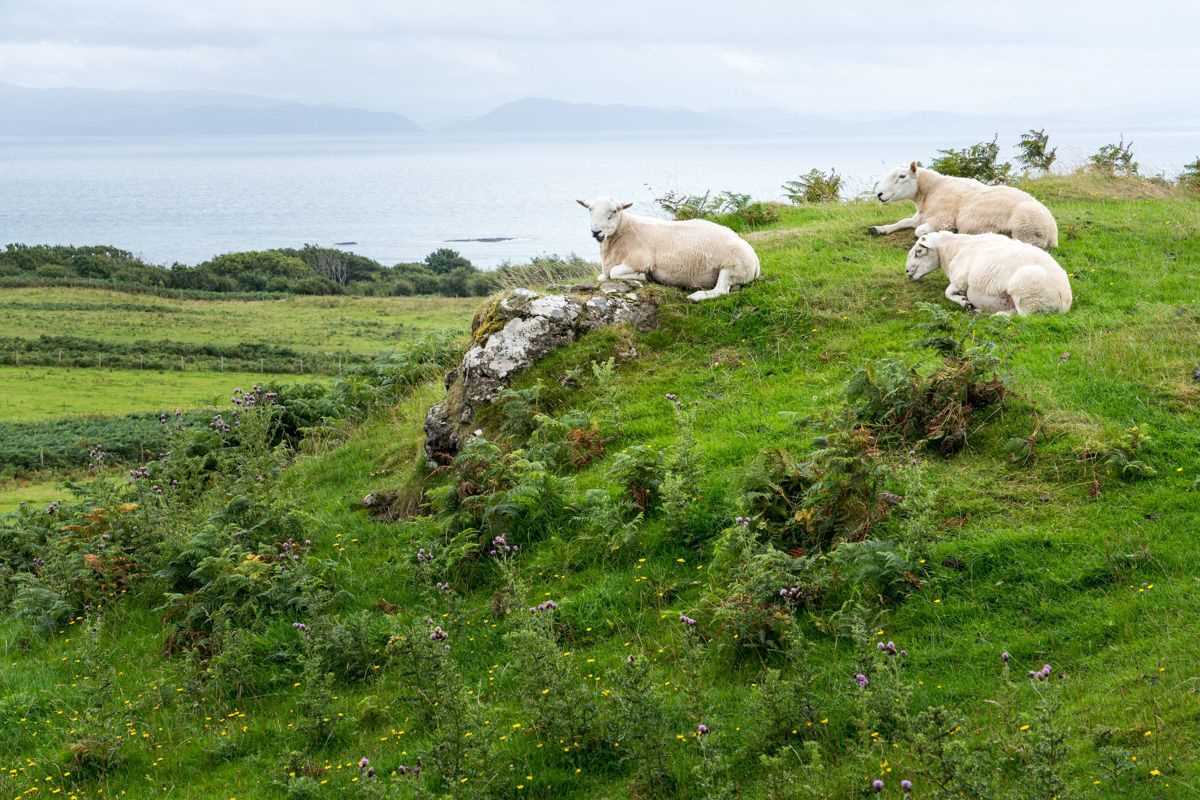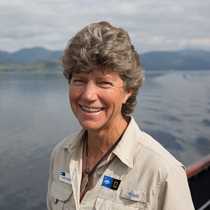Windy weather continued through the night, rocking Lord of the Glens even in our sheltered berth in Inverie. By morning, it was calm again and we sailed as scheduled to the Isle of Eigg. During our journey, we heard a presentation on the Lord of the Isles and learned that the history of this line of nobility developed from a mixed Viking-Gaelic ancestry. The line ruled the west coast and islands of Scotland until the 15th century, a time when Gaelic culture flourished.
We arrived on Eigg mid-morning and had the opportunity to explore the island on our own or join a group walk. A few adventurous folks set off on bicycles. Eigg is a special place for both cultural and natural reasons. In 1997, the people of Eigg purchased the island, making it a community-owned and managed estate. The residents developed energy sources using water, sun, and wind, and now produce all the power for the island from these renewable sources. Geologically, Eigg is a fascinating location. It formed from volcanic activity 50-60 million years ago, and layers of basalt are visible in the land today. Dominating Eigg is the rough mountain An Sgùrr, Gaelic for rocky peak. An Sgùrr formed from a lava flow of resistant pitchstone that filled an ancient river bed. Subsequent erosion of the surrounding softer basalt left the high ridge we see today.
From Eigg, we sailed around Ardnamurchan Point, the most westerly point of mainland Great Britain, marked by a prominent lighthouse. Gannets and Manx shearwaters flew beside the boat as we passed through the choppy sea. By early afternoon, we arrived at the colorful town of Tobermory—the largest town on the Isle of Mull with a population around 1,000. Not even the misty, rainy weather could put a damper on such a cheerful setting, and many ventured for a walk to the nearby lighthouse or to explore the town itself.
Before dinner, Dr. Lauren Hartny-Mills of the Hebridean Whale and Dolphin Trust (HWDT) gave an informative lecture on the marine life of Scotland’s west coast. HWDT works to protect the Hebridean Sea, supporting responsible whale watching, monitoring the marine mammals, and organizing a community wildlife sightings network. Through their work and the data produced, a Special Area of Conservation was created in this region.
Tobermory can be lively in the evening. Some guests ventured off to enjoy the town while others stayed on board to watch a natural history video before turning in for the night.









